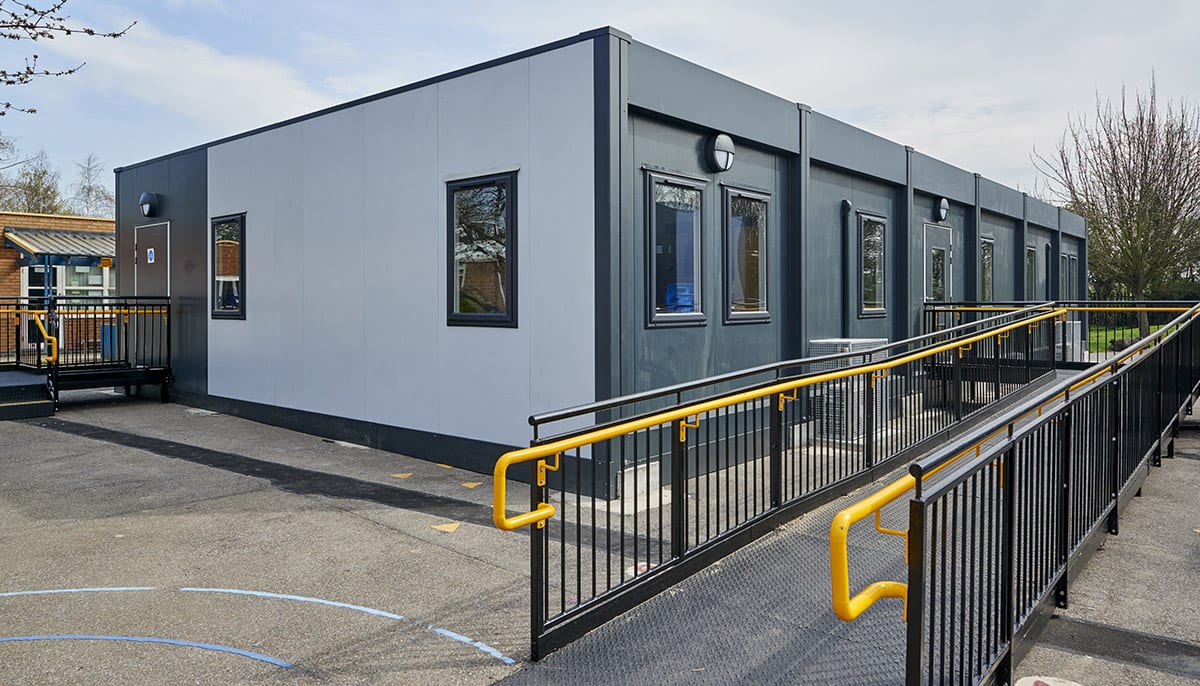
Everything You Need to Know Before Buying a Modular Building in 2023
The construction industry has been evolving rapidly, and one of the most significant advancements in recent years is the rise of modular buildings. These prefabricated structures have shifted the way we think about construction, offering a faster, more sustainable, and often more cost-effective solution compared to traditional building methods. But if you’re considering investing in a modular building in 2023, there are a few essential things you should know.
What is a Modular Building?
At its core, a modular building is constructed off-site in sections, or modules. These modules are then transported to the site and assembled. It’s like building with Lego blocks: each piece is created in a controlled environment and then put together to create the final structure.
Benefits of Modular Buildings
- Speed: Modular buildings are typically constructed faster than traditional buildings. Since modules are built off-site simultaneously, there are fewer on-site delays due to weather or other unforeseen circumstances.
- Sustainability: Many modular construction companies prioritize eco-friendly materials and practices. Moreover, the off-site construction process means less waste and disturbance to the site environment.
- Flexibility: Modules can be easily added, removed, or reconfigured, allowing for adaptable building designs that can change as your needs do.
- Cost-effective: With quicker construction times and the efficient use of materials, modular buildings can be more cost-effective in many scenarios.
Factors to Consider Before Buying
- Purpose: Understand the primary purpose of the modular building. Is it a temporary solution, or are you looking for a permanent structure? This will dictate the type of modular building you need.
- Size and Design: Modular buildings offer various sizes and designs. Consider the space you have available and the layout that would work best for your needs.
- Regulations: Building codes can vary by region. Ensure the modular building you’re considering complies with all local regulations and zoning laws.
- Customization: While modular buildings offer flexibility, there’s a limit to customization. Think about any specific requirements or custom features you’d want in your structure.
- Resale Value: If you believe you might sell the modular building in the future, consider how easy it would be to sell and if it would retain its value.
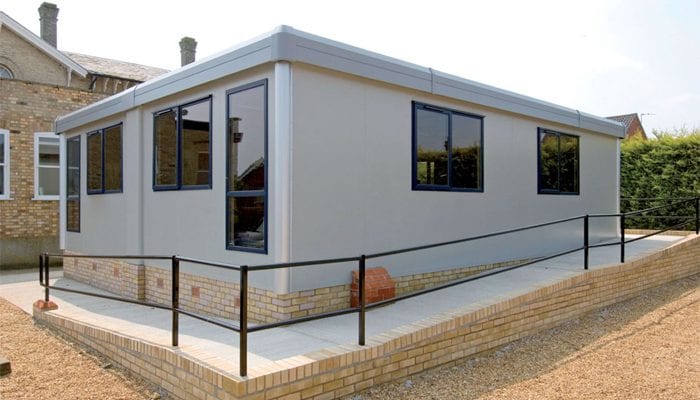
Pricing Trends in 2023
Modular building prices have been affected by several factors in 2023:
- Material Costs: The fluctuation in material prices, especially in steel and lumber, can influence the overall cost of a modular building.
- Labor: A skilled workforce is essential for modular construction. As the demand for modular buildings grows, so does the demand for experienced workers, potentially driving up costs.
- Transportation: As modules are built off-site, they need to be transported. Rising fuel prices or logistical challenges can impact the final price tag.
On average, modular buildings in 2023 can range from $50 to $200 per square foot, depending on the above factors and the level of customization. However, prices can vary widely based on location, manufacturer, and specific project needs.
Popular Manufacturers in 2023
While there are many manufacturers in the modular building space, a few have risen to the top in 2023 due to their quality, reliability, and innovation:
- ModSpace: Known for their cutting-edge designs and commitment to sustainability.
- Pac-Van: Offers a wide range of options, from classrooms to office spaces.
- WillScot: Prioritizes flexible solutions tailored to individual client needs.
Modular buildings represent a fusion of innovation, efficiency, and adaptability. As the construction landscape continues to evolve in 2023, understanding the intricacies of modular buildings is crucial for anyone considering an investment. By doing thorough research and considering your specific needs, you can harness the power of modular construction to your advantage.
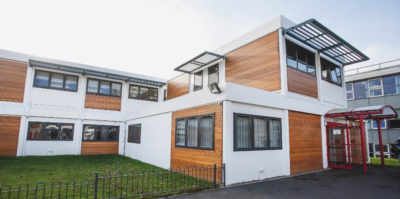
Key Features to Look for When Choosing a Modular Building
When diving into the world of modular buildings, you’ll be faced with a variety of options. Each building boasts its own set of features, catering to a multitude of needs. How do you sift through these to find what’s truly essential? Here’s a concise guide on the key features you should prioritize when selecting a modular building:
Durability and Material Quality
Your modular building should stand the test of time. High-quality materials not only ensure the longevity of your building but also provide better insulation and energy efficiency.
- Steel Framework: A robust steel framework offers superior structural integrity.
- Weather-resistant Materials: Ensure the building is constructed with materials that can withstand the local climate, be it intense sunlight, heavy snowfall, or torrential rains.
Energy Efficiency
An energy-efficient modular building is cost-effective in the long run, reducing utility bills and minimizing environmental impact.
- Insulation: Proper insulation is paramount. Check for wall, roof, and floor insulation specifications.
- Windows and Doors: Double-glazed windows and energy-efficient doors can significantly reduce energy consumption.
- HVAC Systems: Opt for a building that integrates efficient heating, ventilation, and air conditioning systems.
Flexibility and Expandability
One of the major perks of modular buildings is the ability to expand and reconfigure based on changing needs.
- Interchangeable Modules: Can you easily add or remove modules? This feature is especially crucial for growing businesses.
- Interior Partitions: Look for options that allow you to reconfigure internal spaces without major renovations.
Safety Features
Safety should be at the forefront of your considerations, ensuring the well-being of everyone using the building.
- Fire Safety: Fire-resistant materials, sprinkler systems, and clearly marked exits are vital.
- Weatherproofing: In areas prone to extreme weather conditions, features like reinforced roofs and storm shutters can be lifesavers.
- Security: Features such as security cameras, alarm systems, and keycard access enhance the building’s security.
Aesthetic Appeal
While functionality is essential, a modular building’s aesthetics shouldn’t be overlooked. A pleasant environment can boost morale and productivity.
- Customizable Exteriors: Can the building’s exterior be tailored to reflect your brand or blend seamlessly with its surroundings?
- Interior Design Options: A modular building should offer options for different interior finishes, lighting fixtures, and flooring to suit your taste.
Technology Integration
As we advance further into the digital age, buildings should facilitate modern tech needs.
- Wiring and Connectivity: Ensure the building is pre-wired for internet, phone lines, and other communication essentials.
- Smart Systems: Consider buildings that can integrate with smart systems, allowing for automated lighting, heating, or security.
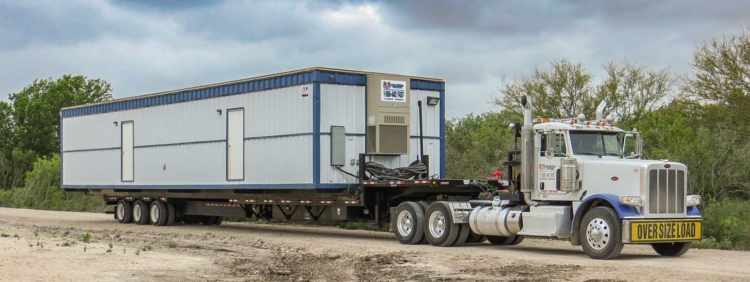
Ease of Transport and Installation
If your modular building will be relocated, transport and installation ease is a game-changer.
- Skid-mounted Options: These are easier to transport and can be quickly set up.
- Pre-installed Utilities: It’s advantageous if the building comes with pre-installed plumbing and electrical systems, simplifying the setup process.
Choosing a modular building is an exercise in balancing needs and budget. By being well-informed about the key features available, you can make a decision that serves both immediate requirements and long-term objectives. Remember, a modular building is an investment, and like all investments, due diligence is the key to unlocking its full potential.
Is a Permit Required to Own a Modular Building?
When considering modular buildings, one of the most common concerns potential owners have is whether they’ll need a permit. While modular buildings offer flexibility and quick construction, they aren’t exempt from local regulations. Here’s what you need to know about permits and modular buildings:
Local Building Codes for Modular Buildings
First and foremost, it’s essential to recognize that modular buildings, much like traditional structures, must adhere to local building codes. These codes ensure that the structure is safe for its intended use and meets the community’s standards.
- Zoning: Before purchasing a modular building, check with your local zoning department. They can inform you whether your property is zoned for such a structure and the specific requirements you must meet.
- Foundation and Setback Requirements: Modular buildings, depending on their intended use, might have particular foundation necessities. Moreover, there might be stipulated distances the building should be set back from property lines, roads, or other structures.
Permitting Process
The permitting process for modular buildings isn’t fundamentally different from that of traditionally constructed buildings. However, there are some nuances to keep in mind:
- Pre-approval: Many manufacturers have their designs pre-approved by state agencies, which can expedite the permitting process. It’s wise to ask the manufacturer if they have state-approved plans that align with your local building codes.
- Site-specific Requirements: Even if the modular building design is pre-approved, you may still need site-specific permits, especially concerning utilities, access, or environmental considerations.
Commercial vs. Residential
There may be different requirements depending on whether the modular building is intended for commercial or residential use.
- Commercial: Commercial modular buildings, especially those intended for public use, may have more stringent requirements concerning accessibility, fire safety, and more.
- Residential: If the modular building is a home or dwelling, it typically needs to meet residential building codes, which might differ from commercial codes in various aspects.
Duration of Stay and Portability
Some regulations take into account the intended duration of the modular building’s stay at a particular location.
- Temporary vs. Permanent: If a modular building is meant to be on a site temporarily (like construction site offices), the permit requirements might be different compared to a permanent installation. However, “temporary” definitions can vary, so it’s crucial to confirm specifics with local authorities.
Fees and Inspections
Securing a permit often involves fees, which vary by locality. Additionally, once the modular building is installed, inspections might be necessary to ensure it complies with all relevant codes and regulations.

While modular buildings present a flexible and efficient construction method, adherence to local regulations is non-negotiable. Before making an investment, always consult with local authorities or a legal expert familiar with construction and zoning laws in your area. Proper research and due diligence can save you time, money, and potential legal complications down the road.
The Top 10 Most Common Uses for Modular Buildings
Modular buildings have gained traction for their versatility, efficiency, and cost-effectiveness. Their adaptability means they can be used across a variety of sectors and for various purposes. Here are the top 10 most common uses for modular buildings:
- Educational Institutions: With growing student populations and sometimes limited space, schools and universities frequently turn to modular buildings as classrooms, laboratories, and administrative offices. These structures offer a quick solution to space constraints during peak enrollment times or during renovations.
- Healthcare Facilities: From full-fledged hospitals to specialized clinics, modular buildings provide the healthcare sector with immediate facilities. They’re especially useful in emergencies or natural disasters when swift medical responses are needed.
- Construction Site Offices: At construction sites, there’s often a need for temporary office spaces, meeting rooms, or break areas for workers. Modular buildings fit the bill perfectly given their portability and quick installation.
- Retail and Commercial Spaces: As businesses expand or undergo renovations, modular structures can serve as temporary or even permanent retail spaces, showrooms, or storage areas.
- Government and Military Use: For military training grounds, border posts, or any government project requiring immediate infrastructure, modular buildings offer quick, efficient, and secure solutions.
- Residential Housing: Modular homes have seen a surge in popularity due to their affordability and reduced construction times. From single homes to multi-story apartment complexes, the modular approach is reshaping the housing market.
- Industrial and Warehouse Facilities: For industries needing additional storage or manufacturing space on short notice, modular buildings can be an optimal choice.
- Agricultural Uses: Farms and agricultural businesses can utilize modular buildings as storage facilities, worker accommodations, or even roadside stalls and shops.
- Disaster Relief and Emergency Housing: In the wake of natural disasters, there’s an immediate need for shelter and medical facilities. Modular buildings can be rapidly deployed, offering victims and relief workers necessary amenities.
- Event and Recreational Facilities: For events, fairs, or any temporary gathering, modular structures can provide ticket booths, temporary accommodations, restrooms, and more.
The adaptability of modular buildings is evident in their wide-ranging applications across different sectors. Whether you’re looking for a permanent solution or a temporary fix, modular buildings offer a flexible, cost-effective, and timely solution. As industries evolve and space becomes a premium, it’s likely that the applications for modular buildings will continue to expand even further.
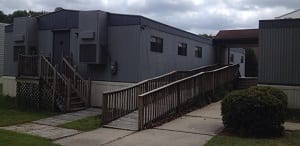
Benefits of Modular Buildings Compared to Traditional Construction
Modular construction has taken the building industry by storm, promising shorter build times, greater efficiency, and a more sustainable approach. But how do these prefabricated structures stack up against traditional construction methods? Let’s delve into the advantages of choosing modular buildings over conventional builds.
- Faster Construction: One of the most significant benefits of modular buildings is the speed of construction. Since most components are manufactured in a controlled environment and then assembled on-site, it significantly reduces the time it takes to complete a structure compared to traditional methods.
- Cost-Efficient: Modular construction can be more budget-friendly. With the ability to mass-produce sections and the reduction in on-site labor and wastage, costs can be better controlled, translating to savings for the end-user.
- Flexibility and Reusability: Modular structures can often be disassembled and relocated to different sites or reconfigured to serve different purposes. This adaptability is especially beneficial for businesses with evolving space needs.
- Quality Control: Since modular components are produced in a controlled factory environment, there’s a consistent level of quality. The controlled setting means fewer errors due to weather conditions or other external factors that typically affect on-site construction.
- Sustainability: Modular construction can be more eco-friendly. With a focus on precision, there’s less material wastage. Moreover, many manufacturers emphasize using sustainable materials and practices, resulting in greener buildings.
- Safety: The factory-controlled setting for constructing modular parts means there’s less risk of on-site accidents and injuries compared to traditional building sites.
- Reduced Site Disruption: Since much of the construction occurs off-site, there’s less equipment, fewer materials, and a smaller crew at the construction site. This leads to less disruption in the area, especially beneficial in densely populated regions.
- Energy Efficiency: Many modular buildings are designed with energy efficiency in mind. Their tight seams and state-of-the-art windows and insulation options can lead to significant savings in energy costs in the long run.
- Customization: Contrary to popular belief, modular buildings are not one-size-fits-all. They offer a plethora of design options, allowing clients to customize their structure based on specific needs and preferences.
- Consistent Timeline: Weather delays, material shortages, or labor disputes can greatly impact the timeline of traditional constructions. With modular buildings, since a significant portion of the work is indoors in a factory setting, timelines are more predictable.
While traditional construction methods have their place and advantages, modular construction offers a modern approach that addresses many challenges faced by today’s building industry. For many projects, especially where time, budget, and flexibility are paramount, modular buildings present an enticing and viable option.
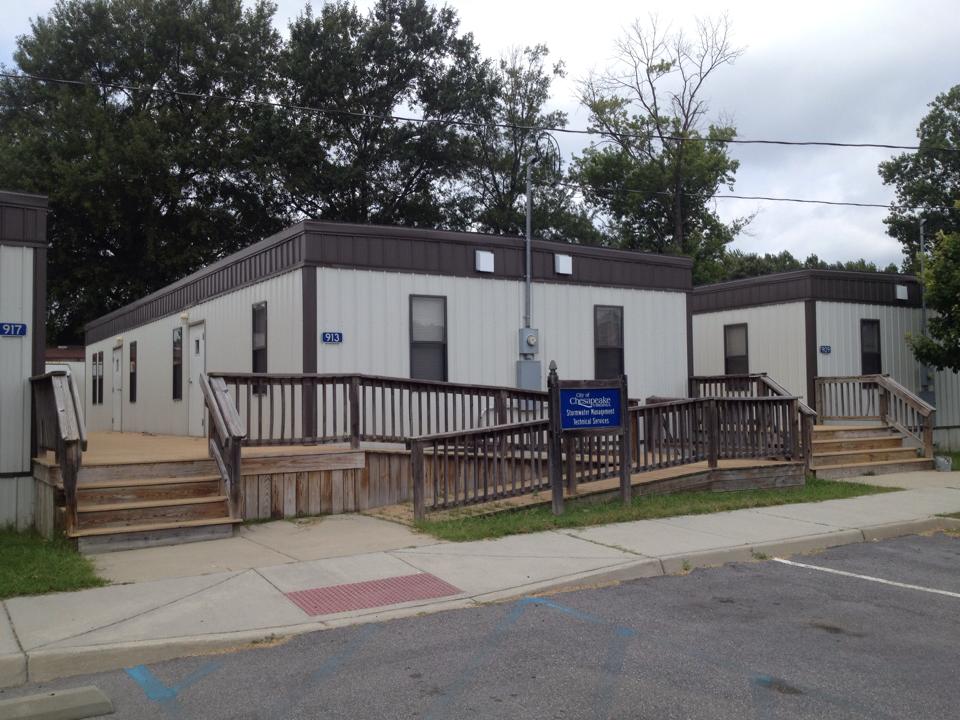
Important Considerations Before Investing in a Modular Building
While modular buildings offer a slew of advantages, it’s essential to carefully evaluate your specific needs and circumstances before diving into an investment. Here are some key considerations:
- Land and Site Preparation: Do you own a plot of land where the modular building will be placed? If not, you’ll need to factor in the cost and availability of a suitable location. Additionally, just like traditional construction, the land will need to be prepared, which can include grading, foundation work, and utility connections.
- Lifespan and Durability: Modular buildings are constructed to last, but their lifespan can vary based on the materials used, the quality of construction, and regular maintenance. It’s essential to inquire about the expected lifespan of the modular structure you’re considering and compare it to traditional building lifespans.
- Resale Value: If you ever plan to relocate or sell the modular structure, it’s worth understanding the resale market. Modular buildings can have good resale value, especially if they’re well-maintained, but this can vary based on market demand and the building’s age.
- Financing Options: Modular constructions might have different financing options than traditional buildings. It’s crucial to explore these upfront and understand any terms, conditions, or prerequisites.
- Warranty and Service: Always check the warranty provided by the modular building manufacturer. A good warranty can be indicative of the quality of the building. Furthermore, find out what post-installation services or maintenance support the company offers.
- Transportation and Installation: Consider the logistics of transporting the modular units from the factory to your site. Are there any potential challenges or roadblocks? Also, ensure that the company you’re working with has expertise in installing the building without hitches.
- Future Scalability: One of the advantages of modular buildings is their scalability. If you anticipate needing more space in the future, it’s worth checking how easy it is to expand or modify the structure you’re considering.
- Local Regulations and Compliance: Every municipality will have its zoning laws, building codes, and regulations. Ensure that the modular building you’re considering complies with all local standards and that you have the necessary permissions to install it.
The decision to invest in a modular building can be a game-changer for many organizations, offering speed, flexibility, and cost advantages. However, as with any significant investment, due diligence is crucial. By taking into account the factors listed above and collaborating with a reputable modular building provider, you can ensure a smooth transition to your new modular space.
